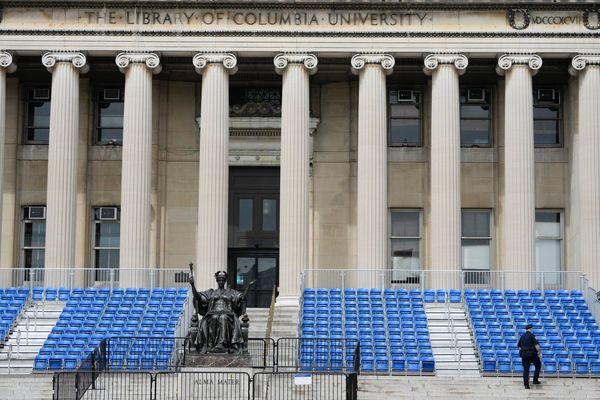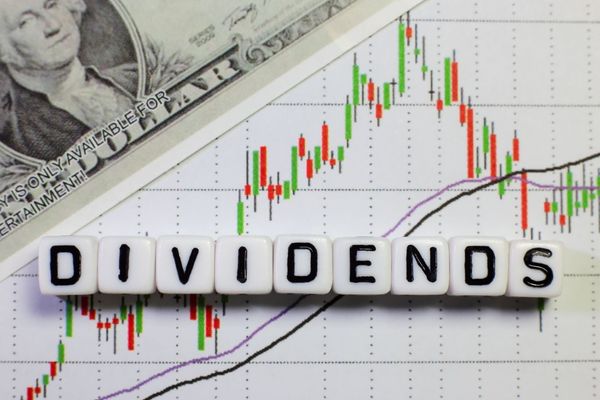Copper prices finally took off this spring only to come down just as abruptly, undercut by China's property woes. Yet everything appears to be lining up for a sustained ascent. Copper miners Freeport-McMoRan and Teck Resources stand to be among the big winners.
The artificial intelligence boom and the green energy transition will exacerbate long-term copper supply deficits. Data centers, power grid upgrades, electric vehicles, charging stations, solar systems and wind turbines all will fuel demand.
Even as copper hit record highs in May, Carlyle strategist Jeff Currie called the red metal "the best commodity out there" longer term and "by far" his highest-conviction trade, in a CNBC interview. Currie began banging the table for copper in 2021, while at Goldman Sachs, dubbing it "the new oil" for its cornerstone role in the energy transition.
"If you're going to electrify the world, you need a lot of copper to do it," Currie told CNBC. Yet over the past three years, two new structural drivers of copper use have materialized. Power demand from AI has created a "bottleneck" that must be overcome to realize its potential. Plus, global military spending on copper-intensive munitions has shifted higher since Russia's invasion of Ukraine.
"You've got three of the biggest trades all wrapped up in one commodity," Currie said.
Copper Incentive Price High
What really makes copper miners such as Freeport and Teck can't-miss propositions is the scarcity of supply and the high bar to justify new projects. Several investment firms including BlackRock and Goldman Sachs have pegged the incentive price as at least $12,000 per metric ton, or about $5.50 per pound. That's roughly 33% above the current price.
The upshot: The longer it takes for the copper price to push to new highs, the longer it will take to green-light mining projects. That means even bigger supply deficits ahead.
"It's becoming so much more difficult to produce these assets," Trevor Yates, analyst at Global X ETFs, which manages the COPX copper miners ETF, told Investor's Business Daily. Among top holdings of the ETF are Teck, FCX, BHP Group and Southern Copper.
"You have to go to lower quality jurisdictions, with lower quality mines, that are more difficult to operate in" and can take 14 years to get up and running.
"With rates at 5%," Yates added, "it's becoming a lot more difficult to justify investing in large, billion-dollar greenfield projects unless you see higher copper prices to incentivize it."
'Best Leverage' To Copper Price
CFRA Research analyst Matthew Miller expects new highs for copper by next year. Freeport-McMoRan "arguably gives you the best leverage to the copper price," Miller told IBD.
Copper prices above production and delivery costs — $2.56 per pound in Freeport's latest quarter even before the benefit of gold and molybdenum mined at the same sites — all fall to the bottom line.
A 33% rise in the copper price would raise earnings before interest, depreciation and amortization by 50% and operating cash flow by about 67%, Freeport's guidance indicates.
Miller has a strong buy on Freeport, among the world's biggest copper producers. He also has a strong buy on Teck Resources. It's on track to double its copper output as it ramps up its expanded Quebrada Blanca mine in Chile.
Production also is ramping at the Anglo American Quellaveco mine in Peru. Rio Tinto is expanding underground at Oyu Togloi, which is about one-third owned by the government of Mongolia.
Yet "after 2025, there is very little in the pipeline for new supply through the end of the decade," Miller wrote in a March 7 overview.
The outlook for robust demand and inelastic supply has turned copper miners into prime acquisition targets. Mining giant BHP Group recently bid as much as $49 billion for Anglo American — a 67% premium to its market value — but got turned down.
Mining Projects Delayed Or Idled
Now speculation is swirling around Teck after finalizing the sale of its metallurgical coal business in July. The Canadian miner's QB2 project is now seen reaching full output in 2025 — two years behind schedule and $4 billion over budget.
Meanwhile, First Quantum Minerals' $10 billion Cobre Panama mine remains idle. The government ordered its closure in November following environmental protests and a court ruling that the granting of its mining rights was unconstitutional.
"Shocking (cost) overruns" and the political situation in Panama "makes us all step back and say we have to be careful" before committing to new projects, Freeport Chairman Richard Adkerson said on an April 23 earnings call.
"If these problems were easily solved," he said, "you wouldn't have the supply shortfalls that we're having."
Still, Freeport said on July 23 that it will tentatively pursue a $7.5 billion expansion of its El Abra mine in Chile. The aim is for production to start in 2033. The likely expansion of the mine, 49% owned by state-owned Codelco, reflects an improved tone recently, Adkerson said. Leftist President Gabriel Boric had won election in December 2021 on a platform to tighten mining regulations and raise taxes and royalties.
Copper Supply Falls As Demand Rises
Yet the long-term challenge in producing enough copper to meet surging demand is more fundamental.
Total output of existing mines and announced projects is set to fall from nearly 25 million metric tons in 2025 to around 20 million in 2035, the International Energy Agency says.
Meanwhile, McKinsey forecasts that copper demand will surge from around 28 million metric tons in 2023 to 39 million in 2035. Secondary sources of copper, such as recycling of scrap, can only bridge about half that looming gap, IEA projections suggest.
McKinsey expects the biggest boost to copper demand by 2035 to come from the energy transition and AI-driven power needs. Those will account for an increase of more than 6 million metric tons. But nearly 5 million metric tons in annual incremental demand should come from urbanization and a growing middle class in India and elsewhere.
AI Appetite Grows
In a March 28 report, JPMorgan's commodities team wrote that they already anticipated a big copper shortfall in 2030 before accounting for AI data centers and the associated increase in power demand. The firm concluded that AI data centers could boost annual copper demand by 2% under "relatively conservative" IEA projections, or 3% a year in a higher-growth scenario, which would add 900,000 metric tons to demand in 2030.
In another March report, Evercore ISI analyst Amit Daryanani highlighted Nvidia's announcement that it will use copper instead of fiber optics to network GPUs (graphics processing units) at distances of less than 1 meter.
"The power and cost benefits make it clear copper will be used as much as possible," Daryanani wrote.
Yet, at some point, copper prices and scarcity may alter the energy transition, the AI buildout and more.
"Availability and cost of power is a critical limiting factor" in capital investment decisions, JPMorgan analysts wrote.
EVs And Self-Driving Cars Need Copper
The European Union, California and other U.S. states targeting a complete shift to EVs by 2035 aren't considering copper supply. That's according to Cornell's Lawrence Cathles and University of Michigan's Adam Simon.
The professors don't see any relief coming on the supply side. In a May paper for the International Energy Forum, they note that just 16 of 224 copper deposits found since 1990 came in the past decade, despite a tripling of exploration budgets.
A shift to basic hybrids — not the plug-in variety — would avoid a copper price spike that could "substantially and significantly impede the advance of less developed areas," the professors argue.
How much copper does an EV need? It's a moving target. Last year, CRU Group cut its 2030 projection of the average copper content per EV to 51-56 kilograms from 65-66 kg. That reflects engineering changes and innovations that reduce wiring. However, that's still double the current copper of a gas-powered car.
Other innovations, including driver-assist and self-driving systems, move in the opposite direction. A fully electric robotaxi will require 73 kg of copper in 2034, IDTechEx senior analyst James Jeffs finds.
Over the coming decade, IDTechEx projects 4.8% annual increases in copper usage for autos. That will add 2 million metric tons to overall demand.
The biggest driver of new copper usage, according to the IEA, may be electric grids. Big improvements are needed to handle increased AI processing and EV charging, as well as wind, solar and battery capacity. Upgrades also are needed in developing nations. Meeting stated climate goals will require an additional 2.5 million metric tons of copper per year by 2040, IEA says. But it would take an extra 5 million metric tons per year to meet the Paris Agreement goal of limiting temperature increases well below 2 degrees Celsius.
Catch The Next Big Winning Stock With MarketSurge
Long-Term Copper Scarcity
The copper scarcity story looks compelling long term. However, the emerging trends aren't yet enough to offset China, which still accounts for half of overall copper demand. Some 44% of China's copper demand last year came from construction, air conditioning and property-related consumer durables.
Copper appears on the edge of tilting from surplus to a deficit. JPMorgan sees a 100,000-metric-ton surplus this year turning to a deficit of around 200,000 metric tons in 2025 and 2026, before accelerating later this decade.
"We continue to like copper equities over the mid- and longer-term, though near-term demand choppiness in China and overhang from U.S. interest rate/election uncertainty have kept some investors looking for better entry points" JPMorgan analyst Bill Peterson wrote in a July 18 note.
Cyclical Push Not Here Yet
All that's seemingly needed is a cyclical push to launch copper prices into orbit. Investors had thought the time might be at hand, with the Federal Reserve pivoting to rate cuts and Beijing expected to unveil new stimulus.
Yet China's Third Plenum policy meeting in July largely disappointed. Investors also may have had a "knee-jerk reaction" to former President Donald Trump's plan to escalate the China tariff war, said Yates of Global X.
He says a "fear of missing out" sent copper skyward in financial markets before the physical market warranted the move. But the pullback makes copper worth a look now, he says.
"We see these cyclical tailwinds coming down the pike. It could be now. It could be in a few months, but for the longer-term investor, it could be a good entry point."










